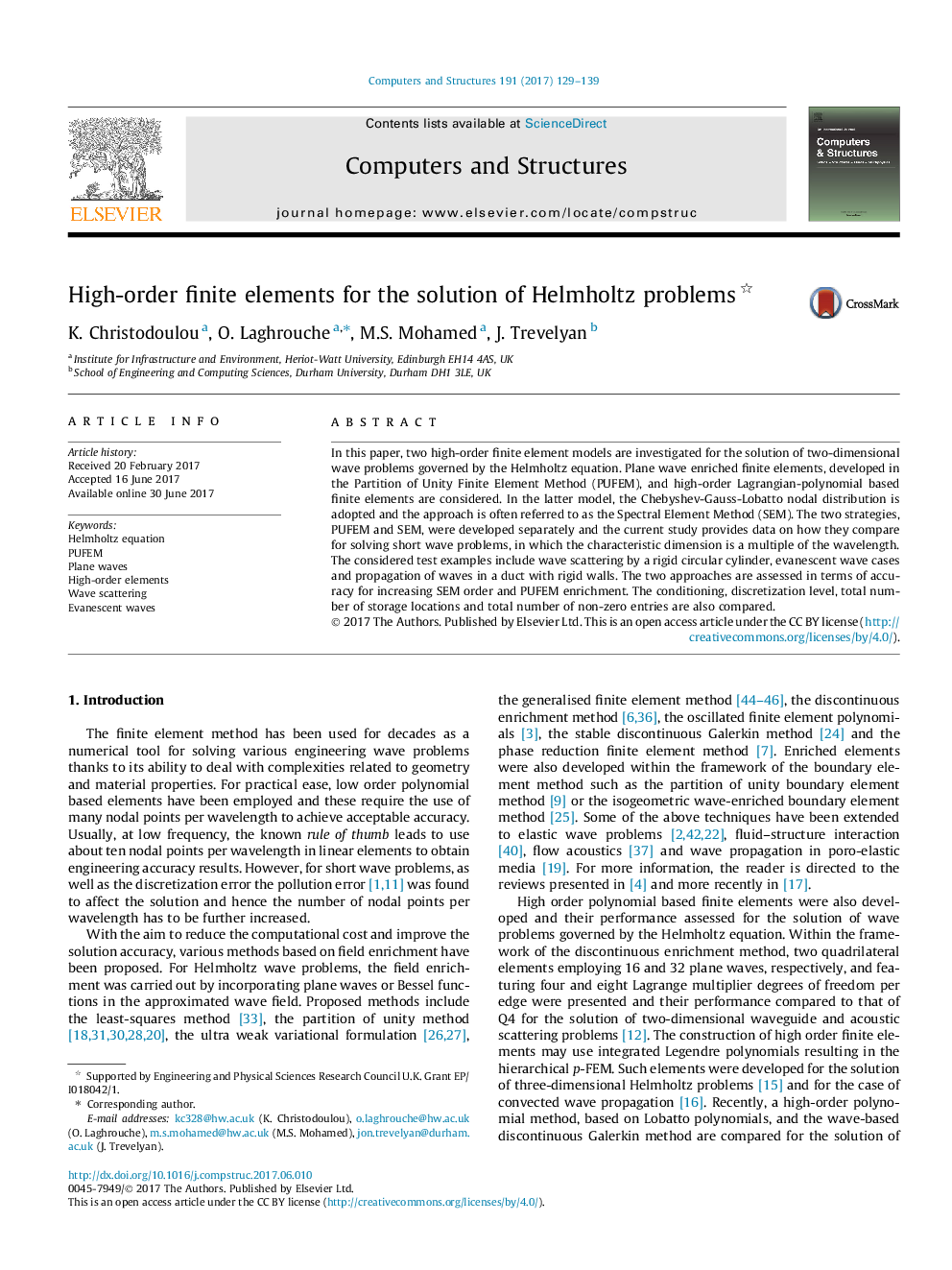| کد مقاله | کد نشریه | سال انتشار | مقاله انگلیسی | نسخه تمام متن |
|---|---|---|---|---|
| 4965648 | 1448454 | 2017 | 11 صفحه PDF | دانلود رایگان |

- Assessment of SEM and PUFEM for the solution of 2D Helmholtz problems.
- Current study provides data on how SEM and PUFEM compare for short wave problems.
- Both h-refinement and p-convergence are considered, with p increased up to 50.
- Assessment based on accuracy, conditioning, discretization and non-zero entries.
- Considered test examples include wave scattering and evanescent waves.
In this paper, two high-order finite element models are investigated for the solution of two-dimensional wave problems governed by the Helmholtz equation. Plane wave enriched finite elements, developed in the Partition of Unity Finite Element Method (PUFEM), and high-order Lagrangian-polynomial based finite elements are considered. In the latter model, the Chebyshev-Gauss-Lobatto nodal distribution is adopted and the approach is often referred to as the Spectral Element Method (SEM). The two strategies, PUFEM and SEM, were developed separately and the current study provides data on how they compare for solving short wave problems, in which the characteristic dimension is a multiple of the wavelength. The considered test examples include wave scattering by a rigid circular cylinder, evanescent wave cases and propagation of waves in a duct with rigid walls. The two approaches are assessed in terms of accuracy for increasing SEM order and PUFEM enrichment. The conditioning, discretization level, total number of storage locations and total number of non-zero entries are also compared.
Journal: Computers & Structures - Volume 191, 15 October 2017, Pages 129-139